Inspired by conversations on the Food52 Hotline, we're sharing tips and tricks that make navigating all of our kitchens easier and more fun.
Today: Sue Conley of Cowgirl Creamery tells us all about stinky cheeses, and how to tell when the funk is just too funky.
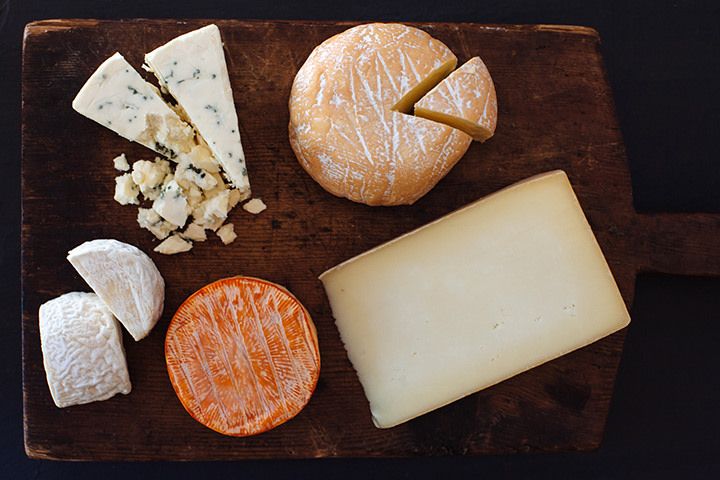
Hustling through the narrow Paris streets to catch the train to Charles de Gaulle Airport, I ducked into a neighborhood fromagerie to pick up a few cheeses for the long flight back home to San Francisco. I selected a wedge of ripe Morbier, a round of oozy Époisses, and a thick slice of aged Comté. Settling into my compact economy class seat, I opened my precious sack of cheese and offered a taste to my travel mate and business partner, Peggy Smith. Within minutes, heads all around us began to turn, noses in the air, sniffing in search of the source. “Stewardess, someone is eating stinky cheese on this plane!” a fellow passenger cried. I was identified quickly and told to stow the cheese—immédiatement. Who would have guessed that an airplane filled with Parisians, whose entire city is enveloped in a lovely olfactory aura of mildly pungent Camembert, would have a reaction to the delightful smells coming from my direction?
Admittedly, Époisses is a very stinky cheese. There are a number of types and degrees of stinky cheese. Washed-rind cheeses, like Époisses, tend to be the stinkiest of all. In most cases, the smell is usually stronger than the taste. Another group in the stinky category are blue cheeses, which seem to carry their pungency straight from the nose all the way through to the flavor. Traditional Camembert and Brie also can pack an aromatic punch, as do small-format goat cheeses like Crottin. So why are these cheeses so stinky, you ask?
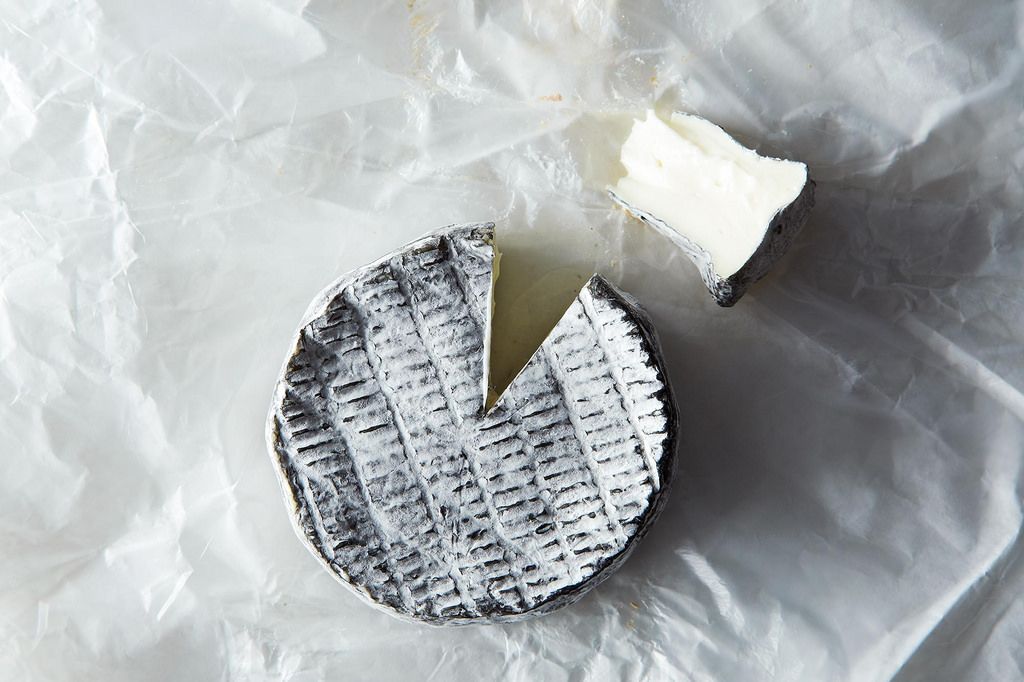
How stinky cheeses get their stink:
Washed-Rind Cheese
Washing the rind of a cheese—meaning rubbing it down with a salt brine, liquor, or water, just enough to moisten the surface—helps build that distinct funky flavor by creating an environment that attracts certain bacteria. The most dominant and common bacteria is Brevibacterium linen (B. linens), which lends a reddish hue to the rind in addition to an austere flavor and robust, somewhat stinky aroma.
Our own Cowgirl Creamery Red Hawk is in this washed-rind category. This is the cheese our French visitors reach for when shopping at the counter. It reminds them of their famous Époisses de Bourgogne. That’s because both rinds are formed with some of the same strains of B. linens, encouraged by a series of washes with salt water during the aging process. Though the smell of our Red Hawk is quite intense, the flavors in the paste are mild and creamy, with notes of cooked beef, mustard, and anchovy, thanks to the use of triple cream. All triple-cream cheeses are made by adding extra cream before the curd is formed, creating a butterfat content of 75% or more as required by French law.
Traditional Époisses methods of washing the rind are used for a handful of fine American artisanal cheeses with punchy flavors, including Winnimere and Harbison, Uplands Cheese Company’s Rush Creek, and MouCo Cheese Company's ColoRouge from Jasper Hill Farm. Some cheesemakers add a final washing with wine or beer to further enhance the bold flavors on the rind and increase the range of complex flavors in the paste.
Other washed-rind cheeses, including French Comté, Uplands Cheese Company’s Pleasant Ridge Reserve, and Cowgirl Creamery’s Wagon Wheel, are made with a cooked and pressed curd, so they are lower in moisture (a less habitable environment for the bacterium) and therefore have a less aromatic rind than the soft cheeses. These types of washed-rind cheeses can still excite the room with a mildly stinky perfume, but we like to think of them as a welcome relief between bites of pungent soft cheese and strong, tangy blue cheese.
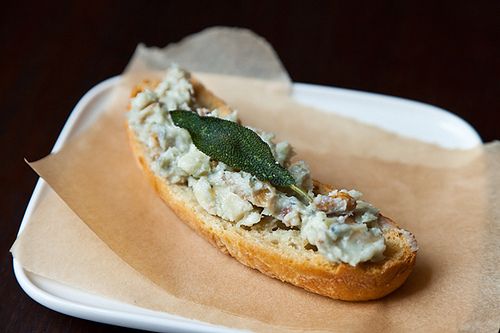
Blue Cheese
Traditionally, blues are high-moisture cheeses with a soft, open texture. The airiness of the curd allows the blue mold to grow inside the cheese, but only after it has been exposed to oxygen. To direct even growth of blue veins throughout the cheese, young rounds are pierced with long needles before going into an aging room (which has consistent humidity and ambient temperatures of about 55° F, the ideal temperature for cheese curing). This is why the strong flavors are not confined to the rind, but instead are evenly distributed throughout the interior of the cheese. In as little as two months, this blue mold can impart dynamic flavors—anything from caramel, tangy lemon, or even roast beef. Most blues also are made with a culture mix containing a bit of B. linens that is added to the milk before the curd is formed, a process that is partly responsible for the strong aromas in the cheese.
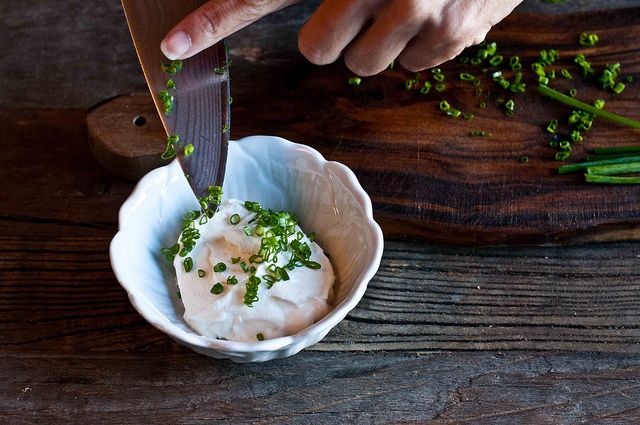
Goat Cheese
Small-format goat cheeses were traditionally made for home consumption. They are often ripened with Geotrichum Candidum yeasts, which impart abundant odors of sulfur along with notes of overripe pineapple or citrus fruits.
Good stinky versus bad stinky:
So how do you tell a beautifully ripe cheese from a spoiled, rotten cheese? The first indication of a past-prime cheese is an ammonia smell, and the second is a breaking down of the rind, leading to colorful tufts of mold, combined with a discoloration of the paste. Each style of stinky cheese has its own “past due” indicators, but ammonia aromas and a rotting rind are universal signs of a spoiled cheese.
More: Avoid bad stink and learn how to store your cheese.
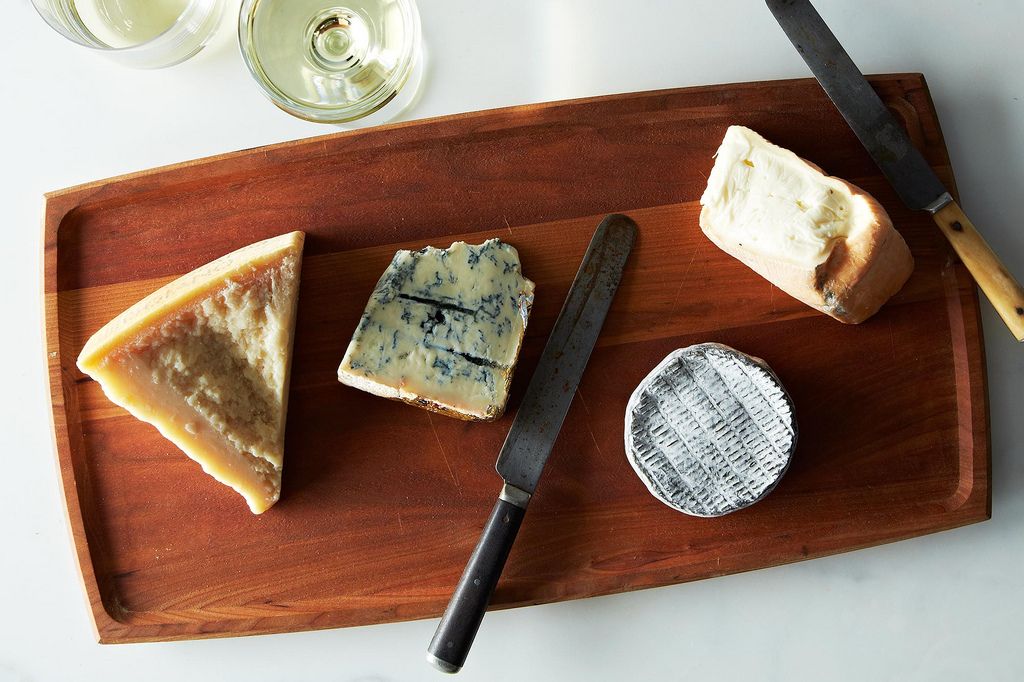
A stinky plate:
Create a stinky cheese board for your next party: Encourage your guests to start with a taste of soft, washed-rind Époisses or Red Hawk. Next, enjoy a bit of soft Crottin or Camembert, and then an aged Comté or Gruyère. Finish with your favorite blue cheese, and you will give your guests an experience to remember. Stinky cheese are best complimented by something sweet. Plum or fig preserves, honey, or quince paste are nice accompaniments. Or port: There’s a reason why this wine is traditionally served with blue cheese. It has a mellowing effect on the sharp flavors and is complementary to all of the big, stinky cheeses. A rich stout beer is an excellent choice, too.
More: Turn cheese-plate leftovers into 5 dinners.
Make sure to plan your stinky cheese gathering at home or in an open space where you won’t be disturbing anyone. According to a 2004 BBC news report, carrying Époisses on any form of public transportation is banned in all parts of France. It sounds like an urban legend to me, but whether it’s a true story or a tall tale, I would advise keeping all stinky cheeses wrapped tight when traveling with those who might not be enjoying the bounty with you.
What are your favorite stinky cheeses? Tell us in the comments.
Photos by Michael Woolsey, Food52, James Ransom, Stephanie Schamban, and Food52.






See what other Food52 readers are saying.